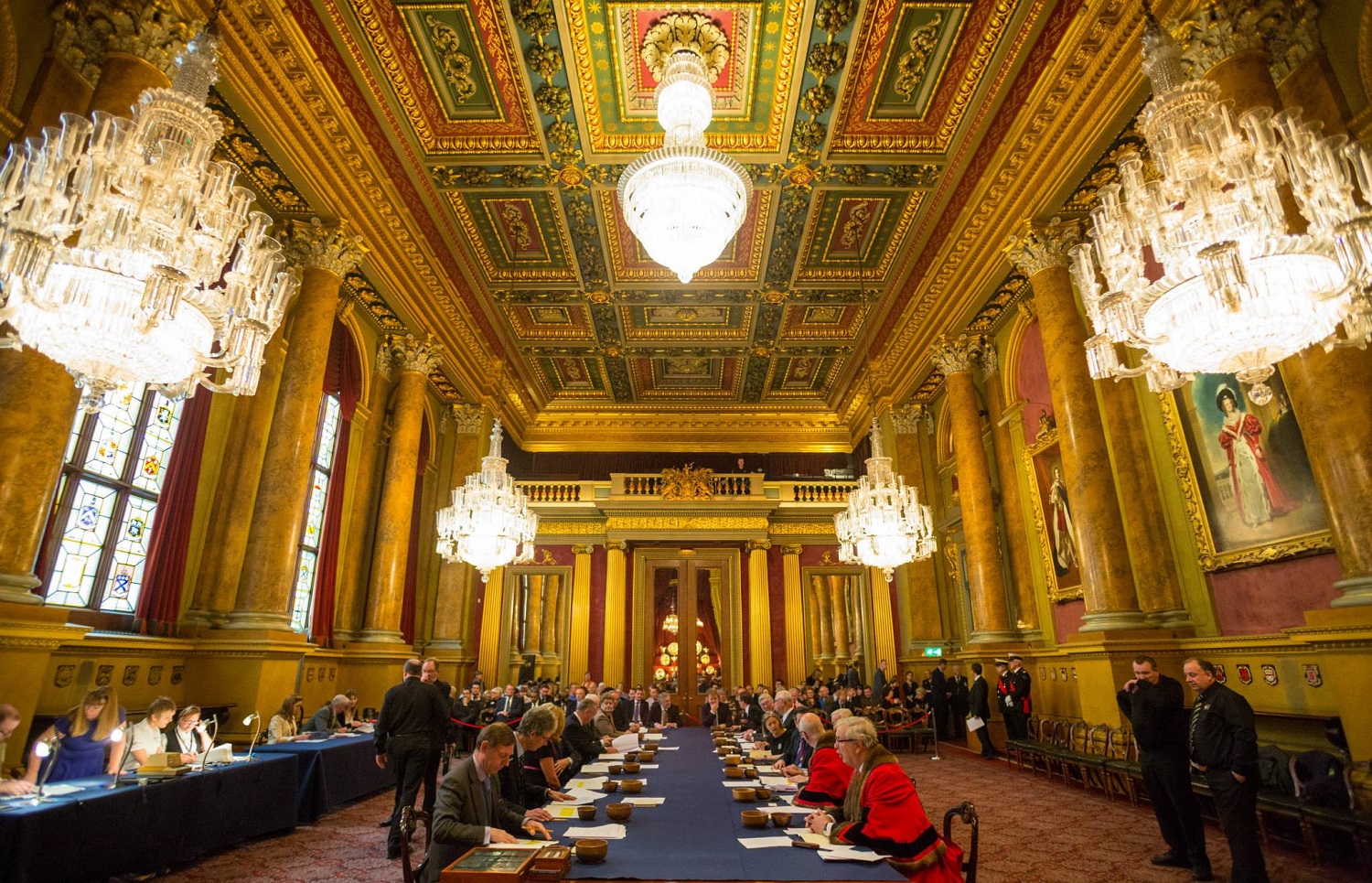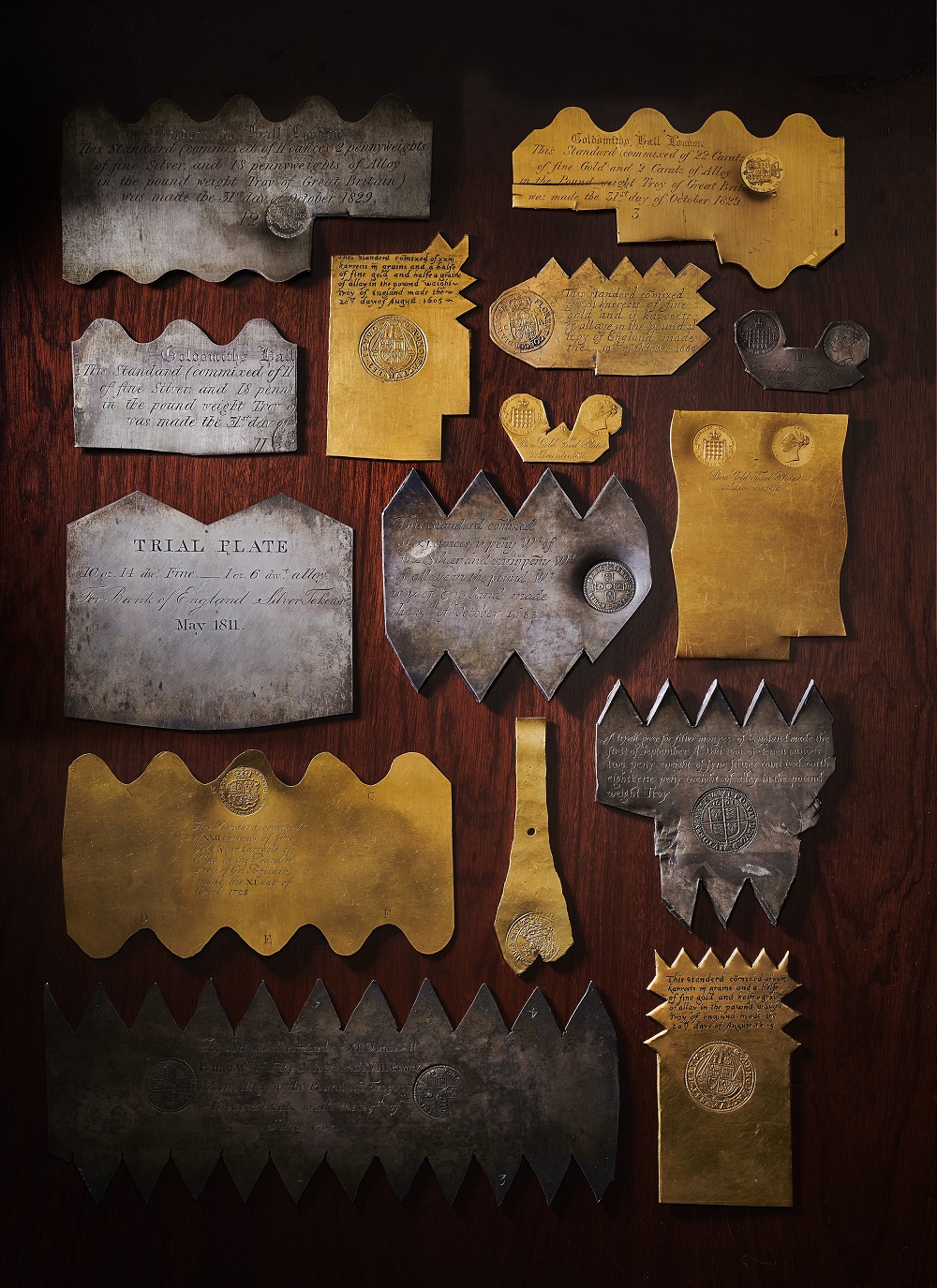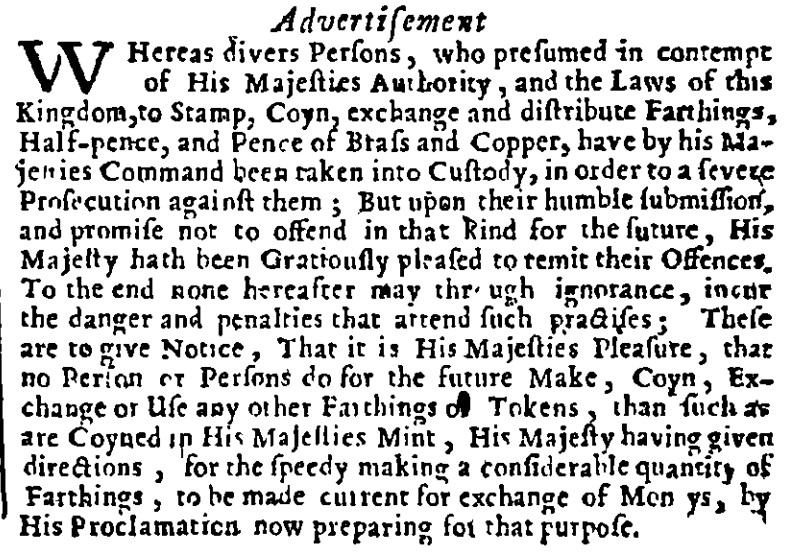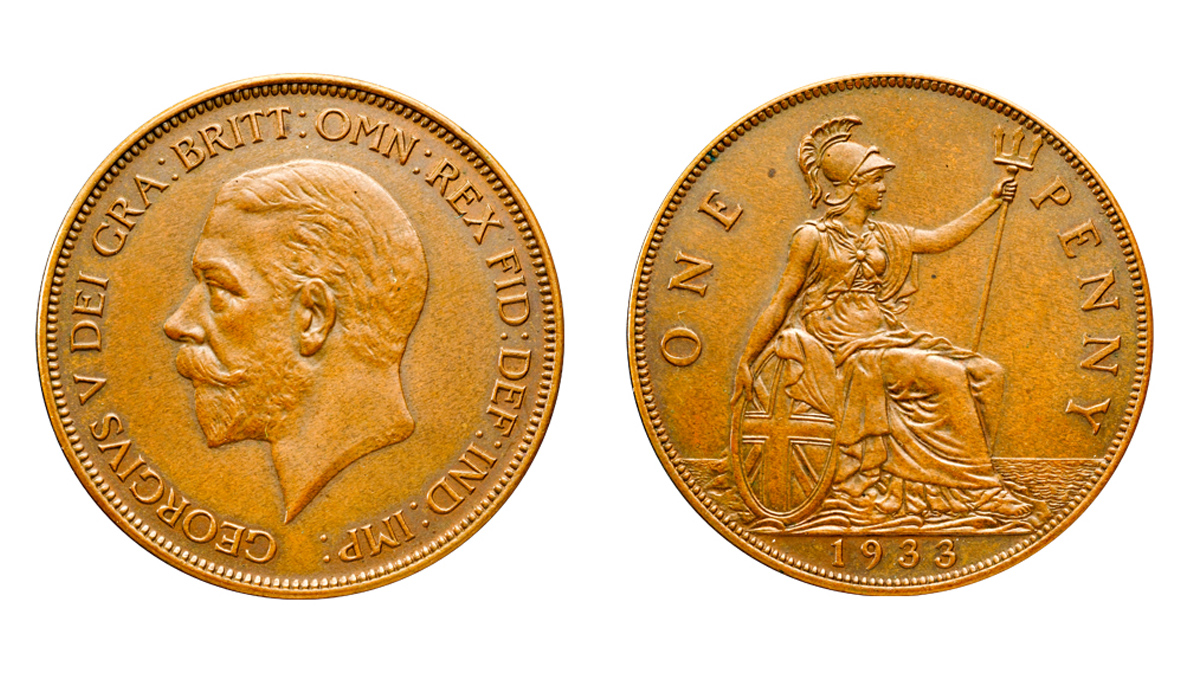Gazette Firsts: The history of The Gazette and coinage

As the Official Public Record since 1665, The Gazette has been documenting changes in British currency for 350 years. As part of our 'Gazette Firsts' series, we look through the archives at Royal Mint coinage, as described in The Gazette.
The Gazette and coinage
As the UK’s Official Public Record, The Gazette has been publishing notices relating to new coinage for 350 years.
Ever since the Coinage Act 1870 (which was later repealed by the Coinage Act 1971) the Queen has had the power to regulate coinage through proclamations. All coin designs and themes go through a lengthy approval process, culminating with approval by the Chancellor and the Queen. The design and range then goes through the proclamation process, and the resulting proclamation is published in The Gazette a few days after its approval at the meeting of the Privy Council.

What is the Trial of the Pyx?
To confirm that coinage issued from the Royal Mint has been coined in accordance with the Coinage Act 1971, a special judicial ceremony takes place called the Trial of the Pyx.
The trials, which are full judicial procedures, have been held since at least 1282, normally once a year. The term "Pyx" refers to the small circular chest in which coins were placed for presentation to the jury, while the Pyx Chapel (or Pyx Chamber) in Westminster Abbey is so named for once being the location of the secure storage for the Pyx and related articles such as Trial Plates, which are all kept under the watchful eye of the Exchequer.
Trials formerly took place first in Westminster Hall and later in the Exchequer at the Palace of Westminster but have been carried out at the Hall of the Worshipful Company of Goldsmiths since 1870, as The Goldsmiths' Company Assay Office is also located in the Hall.
The Trial was gazetted 266 times continuously from 1870 until 1995, with the first notice being place on 22 February 1870 (Gazette issue 23589) and the final notice being placed on the 15 June 1995 (Gazette issue 54063).
Judge and jury
Like most trials, the ceremony is presided over by a judge and jury, and the form of the current ceremony has been unchanged since the reign of Henry III. Where and when a trial takes place is at the Treasury's discretion, though there must be a trial in any year during which the Royal Mint issues coins.
The presiding judge is the Queen's Remembrancer, the Senior Master of the Queen's Bench Division. It is his or her responsibility to ensure that the trial is held in accordance with the law, and to deliver the jury's final verdict to Her Majesty's Treasury.
The jury comprises of at least six assayers from the Company of Goldsmiths and assorted leaders in the financial world. They have two months to test the provided coins are within the statutory limits for metallic composition, weight and size, and decide whether they have been properly minted. Criteria are given for diameter, chemical composition and weight for each class of coinage.
 Early trials
Early trials
In the first few hundred years the ceremony was held, the Master of the Mint was ordered to save for trial one coin for every ten pounds of silver minted, with trials being held roughly every quarter. The frequency of trials throughout the late Middle Ages and Early Modern period was because the Master of the Mint otherwise had very little oversight and accountability. They could therefore not be trusted to not steal the precious metals involved in minting.
One such example was Henry Slingsby, who was Master of the Mint between 1667 and 1680. Ironically, he was the very innovator who thought of engraving the inscription "Decus et Tutamen" around the edge of silver coins to prevent coin debasement, which was a serious crime in the 17th century. For example, two debasers called Thomas and Anne Rogers were respectively hung, drawn, quartered, and burned alive for clipping 40 pieces of silver in 1690. Slingsby was sacked from his supposedly life-long position as Master as his financial accounts were so incompetently kept that he was accused of fraud. His duties were taken over by a Commission and he ultimately died a debtor in 1690.
Today’s trials
The process of testing is different today. Coins to be tested are drawn from the regular production of the Royal Mint. The Deputy Master of the Mint must, throughout the year, randomly select several thousand sample coins and place them aside for the Trial of the Pyx. These must be in a certain fixed proportion to the number of coins produced. For regular coinage the set-aside rate in 1/5000, whereas for special coinage, such as Maundy money, the rate is 1/150.
Modern coinage technology ensures that the metals used are of high purity and that production of coins is highly standardised, meaning coins are currently extremely unlikely to lose a trial. However, the process remains the same, and the coins are still measured against the benchmarks known as ‘Trial Plates’, as they would have been almost 750 years ago. The oldest surviving Trial Plate, for example, is from 1477 and form part of the Royal Mint Museum collection. Today these Trial Plates are made from purest metals of platinum, gold, silver, copper, nickel and zinc.
What was the first coinage notice in The Gazette?
The first notice to appear in The Gazette which related to coinage can be found in Gazette issue 697, published on 22 July 1672. The advertisement relates to King Charles II remitting the offences of those who have been arrested for minting their own farthings.
Shortages of small denomination coins had been a common problem from medieval times. The farthing (or quarter-penny) was originally introduced in 1279. But with the Royal Mint not being able to meet demand for coinage, for hundreds of years merchants had issued their own tokens, comprising of various materials such as brass and lead, that were mostly used close to where they had been minted.
An attempt to centralise production of issuing small-denomination coins began in the early 17th Century when a noble called Sir John Harrington petitioned the King for the monopoly right to coin copper farthings for three years. This was granted with James I’s 1613 proclamation, which established the Royal prerogative to issue currency and simultaneously outlawed all privately issued currency, while assigning Harrington the £25,000 of the profits from operating the monopoly.

However, these tokens were not popular with the public and did not stop the problem of privately issued currency or clipping/debasing the coins. Therefore, after the restoration of the monarchy in 1660, the government of Charles II was keen to drive the tokens out of circulation and replace them with a new, official issue of coinage. But first they wanted to establish an amnesty for all those who had been issuing their own currency, as shown in The Gazette notice in issue 697:
“Whereas divers Persons, who presumed in contempt of His Majesties Authority, and the Laws of this Kingdom, to Stamp, Coyn, exchange and distribute Farthings, Half-pence, and Pence of Brass and Copper, have by his Majesties Command been taken into Custody, in order to a severe Prosecution against them; But upon their humble submission, and promise not to offend in that kind for the future, His Majesty hath been Gratiously pleased to remit their Offences. To the end none hereafter may through ignorance, incur the danger and penalties that attend such practises; These are to give Notice, That it is His Majesties Pleasure, that no Person or Persons, do for the future Make, Coyn, Exchange or Use any other Farthings or Tokens, than such as are Coyned in His Majesties Mint, His Majesty having given directions, for the speedy making a considerable quantity of Farthings, to be made current for exchange of Moneys, by His Proclamation, now preparing for that purpose.”
What was the first new coin to be advertised in The Gazette?
The first new coinage to be advertised in The Gazette was a series of copper half-pennies and farthings, found in Gazette issue 704 and published on 15 August 1672:
“THIS day in Council His Majesty was pleased to Order His Proclamation to be Published to this Effect; That whereas several persons have of late years presumed to cause certain pieces of Brass, Copper, and other base Metal to be Stamped with their private stamps, and then imposed those pieces upon the poor people for Pence, Halfpence, or Farthings, having at the same time bought in and hoarded up the small Silver Moneys, that so there might be a scarcity thereof in common payments, to the great defrauding of His Majesties Subjects; His Majesty to prevent this mischief for the future, hath been pleased to Order certain Farthings and Halfpence of Copper to be Stamped at the Mint; and further to direct, that such Halfpence and Farthings so to be Coyned, shall contain as much Copper in weight, as shall be of the true intrinsique value of an Halfpenny or Farthing respectively, the charges of Coyning and Uttering only deducted; which Halfpence and Farthings so Coyned and to be Coyned, His Majesty Wills shall be currant Money; And that the same, from and after the instant 16 day of August, shall pass and be received in all payments , which still be made under the value of Sixpence, and no otherwise; And lastly, That if any persons shall after the first day of September next, presume to Make, Vend, or Utter any Pence, Halfpence, or Farthings other than the Halfpence and Farthings by His Majesty’s Royal Proclamation Authorised and Allowed, or shall offer to counterfeit His Majesties Halfpence or Farthings , all such Offenders shall be held utterly inexcusable , and punished with exemplary severity, as by the said Proclamation will more fully appear.”
What other new coins have been advertised in The Gazette?
Introduction of the florin
The introduction of the florin was gazetted on 3 August 1849 (Gazette issue 21005): “We have thought fit to order that certain pieces of silver money should be coined to be called Florins or tenths of a pound, and to be of the value of two shillings”.
The equivalent to two shillings, or one tenth of a pound, the introduction of the florin is often thought of as an early step towards decimalisation. It was minted until 1970 and in circulation as legal tender until 1993 alongside the functionally identical 10p that initially was the same size as the florin until the 10p was replaced in 1992 by the smaller version we still use today.

1933 George V penny
One of the most sought-after rare coins in Britain to this day continues to be the 1933 penny. While banks had large stocks of pennies in 1933 – and therefore didn’t need to strike any more – tradition at the time meant that complete sets of coins for that year were buried under the foundation stones of new buildings. Therefore, three 1933 pennies were struck for buildings built that year, along with a small number of other pennies which were to be kept by the British Museum and the Royal Mint Museum. No records were kept as to how many pennies were struck in total; however, it’s thought to be no more than six or seven.
It was discovered in 1970 that robbers had stolen the set of coins deposited beneath the foundation stone of the Church of St Cross in Middleton, near Leeds, which was built in 1933. As a result, a set of 1933 coins buried beneath the foundation stone of St Mary’s Church, Hawksworth Wood in Kirkstall, Leeds, was removed. The third set of 1933 coins is thought to still be in place.
A notice for the production of the penny featuring an effigy of George V was published in The Gazette on 4 November 1927 (Gazette issue 33326): “Every Maundy silver fourpence, threepence, twopence and penny shall have for the obverse impression Our aforesaid effigy, with the inscription "GEORGIVS V D.G. BEITT: OMN: EEX F.D. IND: IMP:"”
Introduction of decimalisation
For centuries, the Britain coinage system was made up of pounds, shillings and pence. 20 shillings made a pound, and each shilling was made up of 12 pence. However, in the early 1960s the government set up a special committee to decide whether the country should introduce a decimal currency. And so, on 1 March 1966, the Chancellor of the Exchequer, James Callaghan, announced that pounds, shillings and pence would be replaced by a decimal currency, with a hundred pence in a pound.
The committee proposed five new coins, with designs and shapes that were similar to the old coinage. The designs for the new coins were announced in The Gazette on 16 February 1968 (Gazette issue 44527). The switch to decimalisation took place on 15 February 1971, otherwise known as Decimal Day.

Euro 96 £2 gold coin
One of the more recent rare coins was the commemorative 1996 European Football Championship £2 gold coin. Featuring a football and 16 small circles to signify the countries taking part in Euro 96, just under 2,100 gold versions of the coin were minted.
A notice for the coins was published in The Gazette on 29 November 1995 (Gazette issue 54228): “The design for the said gold, silver and nickel-brass coins shall be as follows: For the obverse impression Our effigy with the inscription "ELIZABETH.II.DEI.GRATIA.REGINA.F.D." and the words "TWO POUNDS," and for the reverse a stylised representation of a football, with the date of the year "1996" centrally placed and encircled by sixteen small rings. The gold coin shall have a plain edge”.
Where can I find notices in The Gazette that relate to coinage?
Since 1998, all notices relating to the striking of new coinage have been published in The Gazette as proclamations. The revocation of old bank notes (under the Currency and Bank Notes Act 1954) are also published in The Gazette.
However, it should be noted that currency notices before 1998 appeared in Gazette issues under State Intelligence advertisements.
See also
Gazette Firsts: The history of The Gazette and royal babies
Gazette Firsts: The history of The Gazette and royal coronations
Gazette Firsts: The history of The Gazette and deceased estates notices
Gazette Firsts: The history of The Gazette and insolvency notices
Find out more
Coinage Act 1870 (Parliament)
Coinage Act 1971 (Legislation)
Currency and Bank Notes Act 1954 (Legislation)
Images (in order of appearance):
The Gazette
The Royal Mint
The Royal Mint Museum
The Gazette
The Royal Mint Museum
The Royal Mint Museum
Publication date: 13 June 2022
Any opinion expressed in this article is that of the author and the author alone, and does not necessarily represent that of The Gazette.
